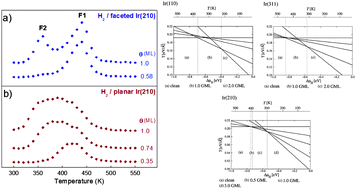Theoretical and experimental studies of hydrogen adsorption and desorption on Ir surfaces
Abstract
We report

* Corresponding authors
a
Institute of Electrochemistry, Ulm University, Albert-Einstein-Allee 47, D-89069 Ulm, Germany
E-mail:
payam.kaghazchi@uni-ulm.de
b
Department of Physics and Astronomy, and Laboratory for Surface Modification, Rutgers, The State University of New Jersey, Piscataway, New Jersey 08854, USA
E-mail:
wchen@physics.rutgers.edu
We report

 Please wait while we load your content...
Something went wrong. Try again?
Please wait while we load your content...
Something went wrong. Try again?
P. Kaghazchi, T. Jacob, W. Chen and R. A. Bartynski, Phys. Chem. Chem. Phys., 2013, 15, 12815 DOI: 10.1039/C3CP51769A
To request permission to reproduce material from this article, please go to the Copyright Clearance Center request page.
If you are an author contributing to an RSC publication, you do not need to request permission provided correct acknowledgement is given.
If you are the author of this article, you do not need to request permission to reproduce figures and diagrams provided correct acknowledgement is given. If you want to reproduce the whole article in a third-party publication (excluding your thesis/dissertation for which permission is not required) please go to the Copyright Clearance Center request page.
Read more about how to correctly acknowledge RSC content.
 Fetching data from CrossRef.
Fetching data from CrossRef.
This may take some time to load.
Loading related content
